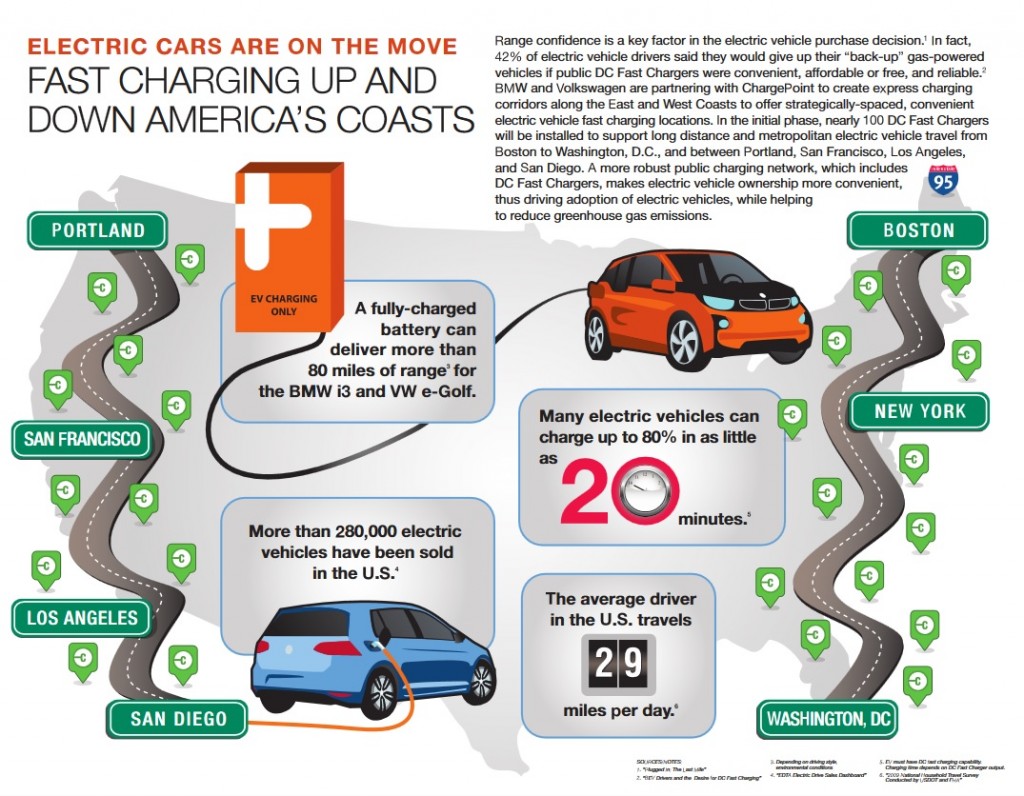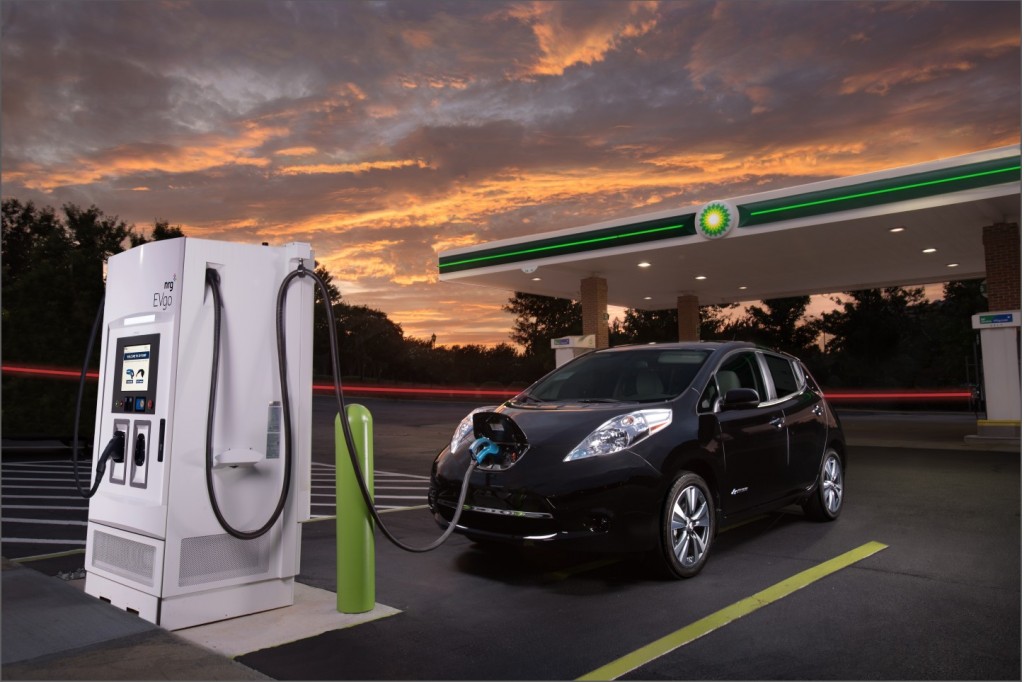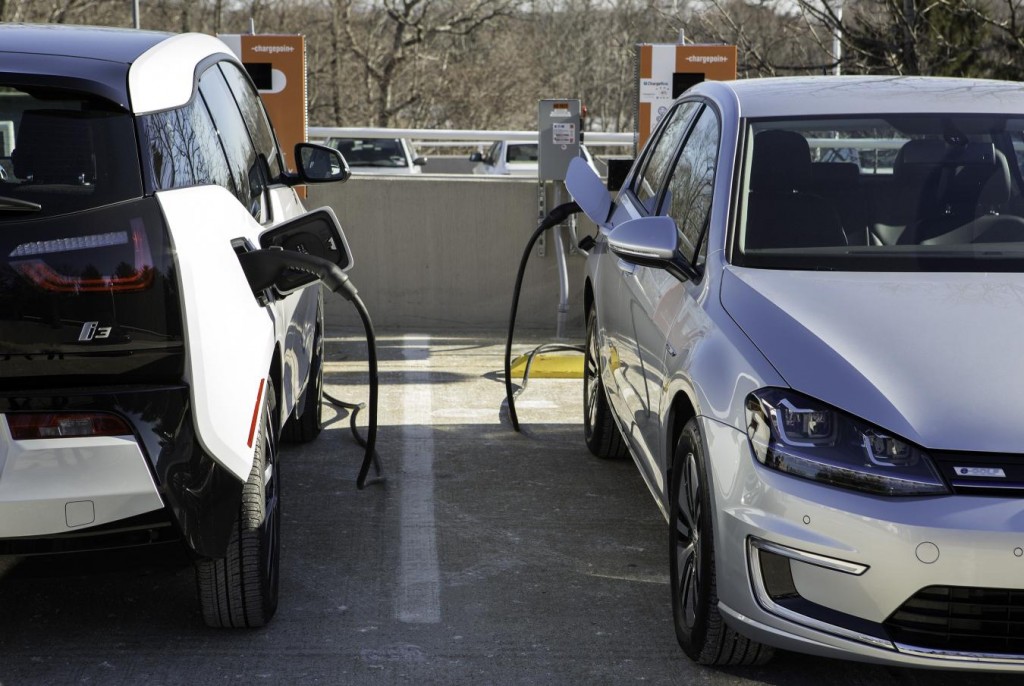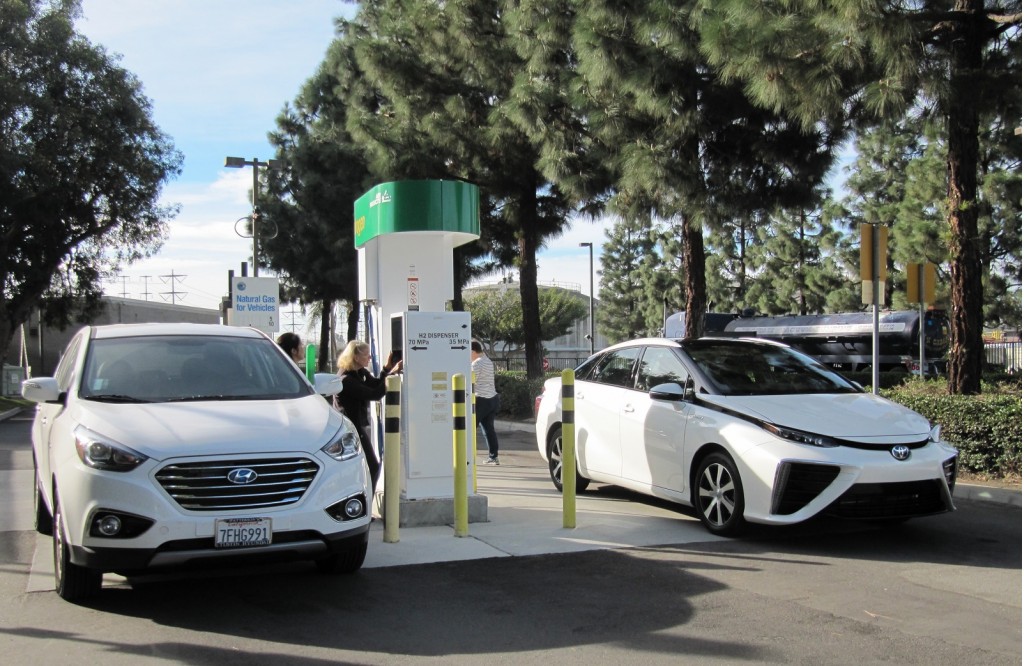Yesterday, federal judge Charles Breyer signed the final agreement committing Volkswagen to buy back or modify the 465,000 TDI 2.0-liter diesel vehicles that are the main focus of the VW diesel scandal.
As part of that settlement, Volkswagen has also committed to providing $2 billion in funds to install charging or fueling infrastructure for zero-emission vehicles.
The clock now starts ticking on a 120-day deadline for the company to submit its initial plan for spending that money over the next 10 years, starting with activities proposed for the first quarter.
DON'T MISS: Final VW diesel settlement signed; buyback offers to start soon
There's already been a fair amount of debate over what those funds should be used for and how they should be administered, both from charging network company ChargePoint and electric-car advocates.
ChargePoint, in fact, filed an amicus brief to prevent approval of the overall Volkswagen settlement without changes to the language of the sections that govern that $2 billion fund.
(A separate second fund, of $2.7 billion, will pay for projects to offset the excess emissions from the various VW diesel vehicles involved in the scandal. If an individual state chooses to do so, up to 15 percent of those funds as well can be designated for zero-emission vehicle infrastructure.)
![Electric-car charging stations at Target in Fremont, CA [photo by Wilson F. via ChargePoint Network] Electric-car charging stations at Target in Fremont, CA [photo by Wilson F. via ChargePoint Network]](https://images.hgmsites.net/lrg/electric-car-charging-stations-at-target-in-fremont-ca-photo-by-wilson-f-via-chargepoint-network_100419184_l.jpg)
Electric-car charging stations at Target in Fremont, CA [photo by Wilson F. via ChargePoint Network]
ChargePoint's brief was accepted by the court. The company's CEO, Pasquale Romano, issued a statement following Judge Breyer's signature that said:
ChargePoint welcomes the $2 billion of spending in EV infrastructure, access and education that will come as a result of Appendix C of the settlement with Volkswagen.
We are also encouraged that dozens of interested parties—including automakers, environmentalists, consumer groups, policymakers and companies in the electric vehicle industry—voiced their concerns during the settlement process and raised important issues, including the level of regulatory and industry oversight for how the funds will be administered to ensure maximum positive impact for all EV drivers.
ChargePoint is disappointed that the court did not address these concerns in its latest ruling. We look forward to working collaboratively with those committed to the future of EV transportation to see that the settlement is implemented in a way that supports innovation, customer choice and a competitive marketplace.
ALSO READ: Volkswagen Diesel Scandal - all our stories
The full language approved yesterday to cover the establishment of the $2 billion fund can be found in Appendix C of the settlement documents.
Among the concerns raised by ChargePoint, advocates, and others have been the following.
Some are easily answered, others less so.

Infographic for 100 CCS fast-charging stations to open during 2015, funded by BMW, VW, ChargePoint
(1) Why should Volkswagen be in charge of developing the plan?
This is a very good point for debate, though the most likely answer is Machiavellian: because it gives the company an incentive to do it right.
Central administration clearly helps to move the entire national network to a common experience, so that it doesn't fall prey to a "hodgepodge of different vendors and different user interfaces," as one advocate put it.
Just ask any electric-car driver who carries three to six different access cards for the various different and incompatible charging networks in any given region.
And the question can be flipped around: what other entity or group should draft and execute the plan?
CHECK OUT: Partial Consent Decree, Appendix C ("The ZEV Investment Commitment," page 147)
A for-profit company developing a plan has the advantages of focus and speed, which seems rather less likely under a system like that proposed by advocate Tom Moloughney in a long and impassioned blog post last week.
He suggests the funds should be administered by "an independent council appointed to oversee the infrastructure fund implementation, so as to not skew the marketplace. There should be appointees from various industry stakeholders, EV advocacy groups, like Plug in America, The Sierra Club, Clean Cities Coalitions, etc."
The agreement contains language that requires VW to submit regular reports on its activities, and submit to oversight for the entire term of the settlement.
Meanwhile, very quietly, VW Group of America's headquarters in Herndon, Virginia, has already been interviewing and hiring staff for the project for a few months now.
One respected executive who spent much of the past decade heading a carmaker's infrastructure efforts has already been hired. Many others, from carmakers, equipment providers, network operators, and environmental groups, are presently interviewing.
![Nissan Leaf electric car with eVgo quick charging station. [courtesy eVgo] Nissan Leaf electric car with eVgo quick charging station. [courtesy eVgo]](https://images.hgmsites.net/lrg/nissan-leaf_100417392_l.jpg)
Nissan Leaf electric car with eVgo quick charging station. [courtesy eVgo]
Given that VW had only a few U.S. employees with deep EV infrastructure experience, it is to be hoped that the staff it hires will bring its collective knowledge and battle scars to provide the diversity of views required.
(2) Why should Volkswagen end up owning some or all of the infrastructure?
It's easy to understand the anger of environmental and electric-car advocates at the idea that VW Group should be penalized, to the tune of $2 billion, for violating U.S. emission laws—only to be able to spend the fine on building an asset it will own.
As with the previous question, however, it's not immediately clear what successful models there have been for the alternative, which would presumably be distributed ownership, operation, and maintenance of the resulting assets.
And in this case, there's at least one precedent—albeit one that was equally controversial at the time it was approved.

BMW i3 and Volkswagen e-Golf electric cars using Combined Charging System (CCS) DC fast charging
That would be the settlement in late 2012 between the state of California and energy company NRG concerning overcharges levied on California utility ratepayers by one of NRG's predecessor companies.
The agreement required NRG's EVgo charging network to build electric-car charging stations, and prep additional sites for later installation, significantly expanding the footprint of the state's charging capabilities.
The EVgo network ended up owning those charging sites, and it now claims to be the largest U.S. operator of DC fast-charging sites. (NRG spun out a majority stake in EVgo during a broader corporate restructuring.)
(3) What is to prevent the funds from giving advantage to VW Group vehicles, especially since Volkswagen has said it plans to release 30 battery-electric vehicles by 2025?
Under the language of the settlement appendix, the infrastructure that is funded must adhere to open standards and provide charging for all such connectors.
In practice, for electric-car charging, that means standard Level 2 charging connectors, and both CHAdeMO and Combined Charging System (CCS) protocols for DC fast-charging sites.
In other words, it couldn't be limited solely to the CCS standards that Volkswagen, Audi, and Porsche vehicles will use.
Tesla Supercharger equipment, on the other hand, is not an open standard that has been approved by international standards bodies. While it can optionally be included, all open standards must be provided.

Nissan Leaf electric car using DC fast-charging station at BP in Metrolina area of Charlotte, NC
(4) What mix of DC fast-charging and lower-speed 240-volt Level 2 charging will be funded?
This is one question where most advocates respond in unison: the bulk of the funds, if not the total amount, should be spent on an nationwide network of fast-charging sites that offer both standards.
Tesla Motors began building out its Supercharger sites in earnest three years ago. Now, the Silicon Valley startup has proven the importance of offering a fast-charging network that allows electric-car drivers to travel between city pairs and, if they wish, across the country.
In addition to that, some electric-car makers suggest that fast-charging sites also need to be placed in urban neighborhoods as well.
That would allow residents of apartment complexes and other multiple dwellings the chance to recharge longer-range electric cars once a week or so—more or less mimicking a weekly gas-station visit.
![Renault Fluence ZE charging at Better Place charge point in apartment bldg [photo: Brian of London] Renault Fluence ZE charging at Better Place charge point in apartment bldg [photo: Brian of London]](https://images.hgmsites.net/lrg/better-place-photo-brian-of-london_100393065_l.jpg)
Renault Fluence ZE charging at Better Place charge point in apartment bldg [photo: Brian of London]
Slower Level 2 charging can be provided by workplaces, commercial enterprises, and other sites that want to attract electric-car drivers.
But there appears to be fairly strong consensus that DC fast charging is by far the most important thing on which to spend the $2 billion.
That said, especially during the first 2.5-year period of activity, some Level 2 charging may be provided—simply because many current vehicles, especially plug-in hybrids, do not have DC fast charging built in.

BMW i3 and Volkswagen e-Golf electric cars using Combined Charging System (CCS) DC fast charging
(5) How will fast-charging sites be future-proofed to ensure they work not only with today's standards but also tomorrow's?
This is a case where the agreement's structure—it's broken into four periods of two and a half years, each of which will have a separate action plan—will help adjust to future circumstances.
Today, both CHAdeMO and CCS fast charging is limited to 50 kilowatts. But the standards bodies overseeing both protocols are working to raise them to 150 kw, and even beyond.
The critical thing will be to fund fast-charging sites that take into account the service life of a fast-charging station, which is only 5 to 7 years, but have the electric infrastructure to accommodate future stations not yet developed.

2017 Chevrolet Bolt EV
And the pace of rollout needs to be matched to the numbers of vehicles on the road.
For example, close to 100,000 Nissan Leafs are now on U.S. roads, the vast majority of them with 50-kw CHAdeMO connectors. And tens of thousands of Chevrolet Bolt EVs with CCS fast-charging ports will start arriving next year to join them.
Those cars will need to be served for many years, starting now, before smaller numbers of high-priced luxury vehicles with 150-kw fast-charging ports start to arrive on U.S. roads in 2019 and thereafter.
(6) Since zero-emission vehicle infrastructure is being funded, what portion (if any) will go toward hydrogen fueling stations for the much lower number of fuel-cell vehicles on U.S. roads?
Given the sometimes heated animosity of some electric-car advocates toward the capital-intensive business of building hydrogen fueling infrastructure, this could become a contentious issue.
While the number of plug-in electric cars on U.S. roads now numbers in the hundreds of thousands, hydrogen vehicles now number less than 2,500.
And fuel-cell cars require hydrogen stations to run, unlike electric cars which can recharge at their owners' homes and workplaces—or anywhere an electric socket exists.

2015 Hyundai Tucson Fuel Cell, 2016 Toyota Mirai at hydrogen fueling station, Fountain Valley, CA
The rollout of California's network of hydrogen stations has so far lagged the announced schedule, though new sites are coming on line each month.
But portions of this pool of money could be seen as ripe for kick-starting an expanded network of hydrogen stations that would enable greater ranges throughout the state for those cars.
Stay tuned on that one.
_______________________________________













